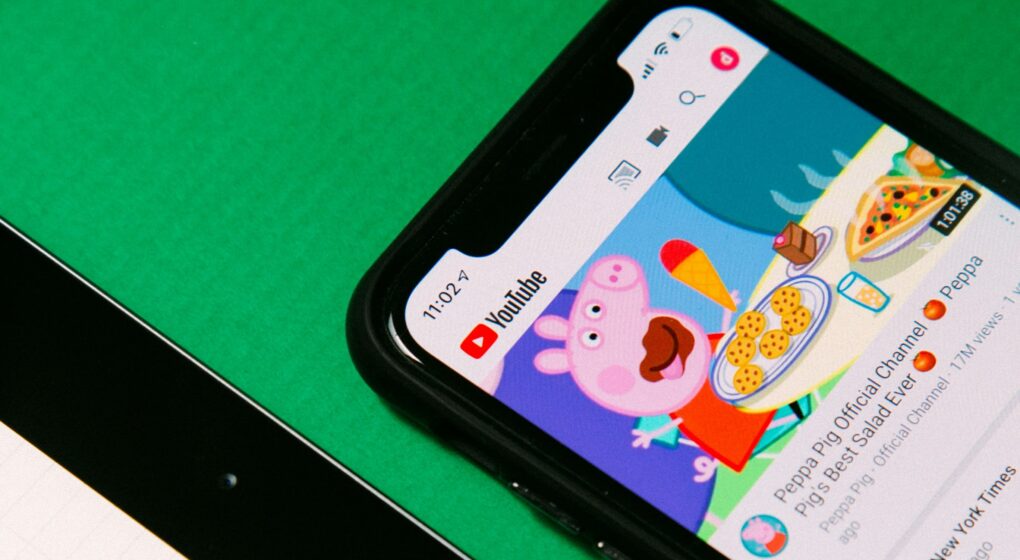
Categories:
If you use social media to promote your business, you know how challenging it can be to keep up with trends, best practices, and popular platforms. But if there’s one thing in the industry you can count on, it’s that the youngest generation will always be the one to shape the next big social shift. They’re the forecasters of pop culture, giving us a peek into what’s to come, and how to get ahead of emerging trends.
It’s why I decided to have kids. Just kidding.
Seriously, though—when I started my career in social media, I was the forecaster. I was 21 years young and full of fresh ideas and false confidence. Now, in my mid-thirties, I rely on my tweenage daughters to keep me relevant…and humble. Trust me when I tell you nothing humbles you faster than a 10-year-old.
While you might think that having a mom whose job is to create social media content for brands is “cool”…my children do not. They think it’s incredibly “cringe” and roll their eyes whenever I ask them for advice.
So I’ve stopped asking, and started simply observing.
Last week, I allowed my daughters to watch YouTube (Kids) Shorts for an hour, and I sat a few feet behind them on the couch, watching them watch.
Them: Mom, what are you doing?
Me: Working.
Them: *rolling their eyes* Whatever.
I let them have complete control of the remote and simply observed how they selected and interacted with various videos. They’re not allowed to have phones, and their iPads have app restrictions, so any social media they watch is on our TV.
In just a few minutes, I was able to pick up on three interesting Gen Alpha behaviors that will help shape the way I think about vertical video content for my clients moving forward.
Here’s a summary of what I learned:
1. Adults are overthinking (and under-imagining) things
After just a few minutes of watching my kids scroll through and choose videos to watch, my first reaction was…really? Out of everything on YouTube, that’s what you choose? In hindsight, I shouldn’t have been so surprised. The millennial in me was expecting them to want to watch the same types of things adults like to watch—makeup tutorials, sports highlights, celebrity gossip or clever satire. But they wanted to watch videos of things kids are curious about: What happens if you run over a tube of toothpaste? How many slushies would it take to fill a swimming pool? What would it look like if you made a smoothie out of candy?
It made me realize that when it comes to creating content for kids, more often than not adults are overthinking it. We’re focusing too much on being clever or ultra creative, and not enough on being simple and imaginative. My kids weren’t interested in fancy transitions or aesthetic CGs (caption graphics), they just wanted to watch a single-take clip of someone filling a kiddie pool with slime. Noted.
2. Gen Alpha is happy to watch ads, as long as they don’t look like ads
One of the most interesting behaviors I observed during my kids’ free rein of YouTube Shorts was how they interacted with ads. The first thing I noticed was what I expected—as soon as they identified something as an ad they skipped it. No surprise there—although I was impressed with just how quickly they reacted. Videos wouldn’t even fully load before they saw the high production quality and—skip.
What was more interesting, and a little surprising to me, was the ads they WERE willing to watch. Two-minute-long videos of kids or teens opening up toys or trying different sunscreens— videos that, to me, were clearly paid ads, they watched cover to cover. At one point, I even asked, “You know this is an ad, right? The toy company paid for this video.” To which my younger daughter responded, “Yeah, I know, I want to see how it works so I know if I want it or not.”
Interesting.
Turns out it’s not ads they’re opposed to, it’s just things that look like ads, in the traditional sense. Anything that looked like a professional filmed it, they skipped. That same information, delivered by a kid (peer), in what looked like a single take filmed on a smartphone, was good to go. And that kid didn’t have to be someone they recognized—any random kid would do.
My takeaway? Younger generations are not as “ad-averse” as older ones. They’re open to being “sold” stuff—as long as it’s on their terms. So lose the lighting kits, elaborate sets and celebrity endorsements and aim for low-production, product-in-action content, delivered by someone perceived to be a peer.
3. Originality isn’t as valuable as we think it is
The third, more subtle thing I noticed about my kids’ YouTube Shorts behavior isn’t something I picked up on right away. It took a few times checking in on what they were watching to put it together. I started to see that they were selecting the same types of videos over and over. Not necessarily the same creators, but similar formats. Split screen, visual-ASMR type videos were the first ones I noticed. Typically someone is talking or telling a story on one side, while someone completely unrelated decorates a cake, or paints their nails, or assembles a LEGO set on the other side. They also seemed to gravitate to quizzes—videos testing how many numbers they could memorize, or which brand logos they could identify. And videos with certain music tracks showed up over and over too.
Of course, part of this is due to YouTube’s algorithm—the more they watch a certain type of content, the more it will show up in their feed. But when I watch them navigate their feed, they’re actively seeking out certain types of videos and avoiding other, less familiar formats.
The scientific name for this phenomenon is the Mere Exposure Effect. It describes our tendency as humans to gravitate to things we’re familiar with, simply because they’re familiar. It’s why songs tend to “grow on you” the more you hear them on the radio—even if they aren’t that good. This effect is magnified on social media, where we gravitate to the familiar, and then the algorithm works to keep the familiar front and center.
So what does this mean for content creators and social media advertisers? It means trends are likely even more powerful than we originally thought—and originality…not so much. As creatives, our tendency is to want to make something new, something unique. But copycats win on social media.
The key to success is to figure out what’s already trending—what your audience is familiar with—and then recreate it with your own spin. If the format is familiar, your content already has a head start and is more likely to appeal to the people you’re trying to reach. In other words, don’t reinvent the wheel. Just make a shinier one.
The Bottom Line
Staying on top of social media trends and best practices isn’t easy. But history tells us that the youngest social media users are often the best predictors of future mainstream behavior. So even if your target audience is older, observing how kids and teens interact with social media content is a great way to get ahead of the game.
Looking for help shaping your social media strategy? Get in touch with our Social Media team today!
About Ethos
Ethos is a multiplatform branding agency that develops and executes integrated marketing campaigns across multiple channels for companies inside and outside of Maine. At Ethos, we believe that the most effective way to set a company’s marketing course is by finding its core truth – its ethos. We know that once we discover and communicate that core truth, we can truly make a difference for each client’s unique marketing and business objectives. With Ethos, you get more than a marketing agency. You get a long-term partner whose goals are your goals. Learn more about the Ethos approach and the work we’ve done for our clients. Want to have a conversation about your brand’s core truth? Contact us today!


